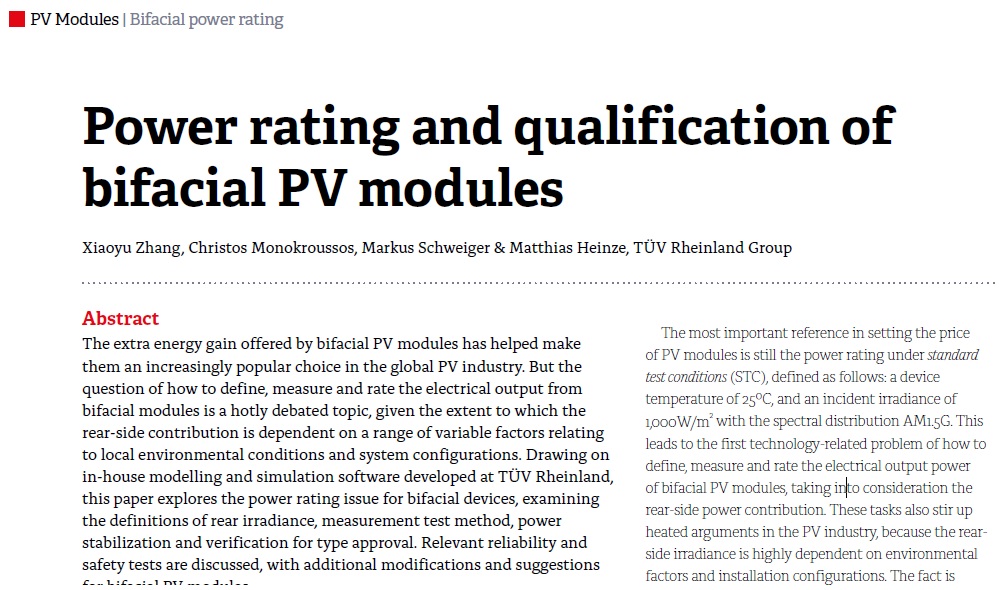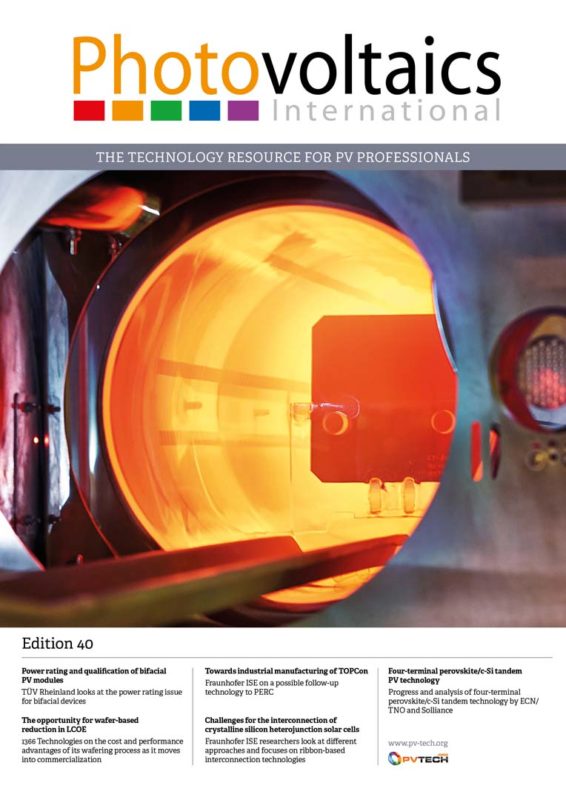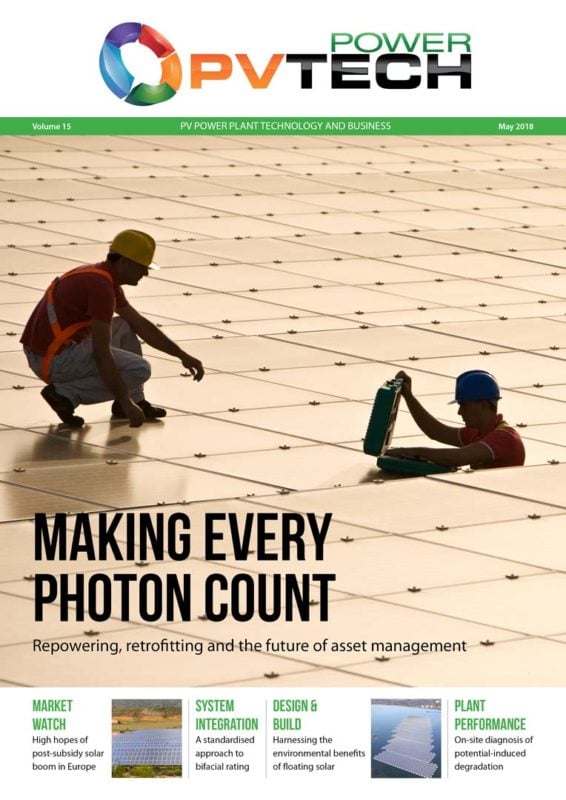By Xiaoyu Zhang; Christos Monokroussos; Markus Schweiger; Matthias Heinze, TÜV Rheinland Group
The extra energy gain offered by bifacial PV modules has helped make them an increasingly popular choice in the global PV industry. But the question of how to define, measure and rate the electrical output from bifacial modules is a hotly debated topic, given the extent to which the rear-side contribution is dependent on a range of variable factors relating to local environmental conditions and system configurations. Drawing on in-house modelling and simulation software developed at TÜV Rheinland, this paper explores the power rating issue for bifacial devices, examining the definitions of rear irradiance, measurement test method, power stabilization and verification for type approval. Relevant reliability and safety tests are discussed, with additional modifications and suggestions for bifacial PV modules.



